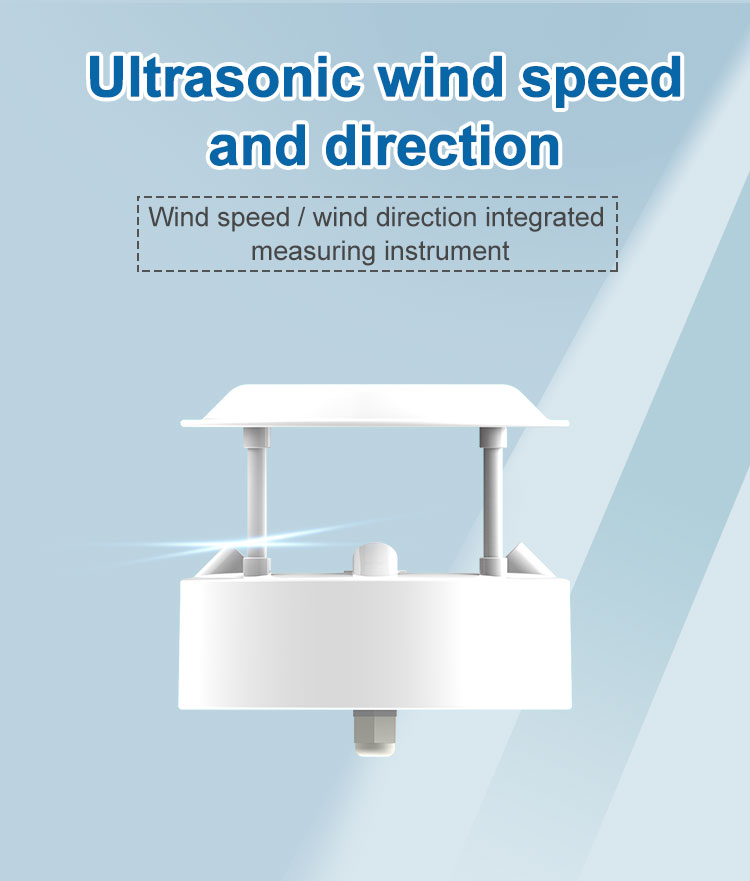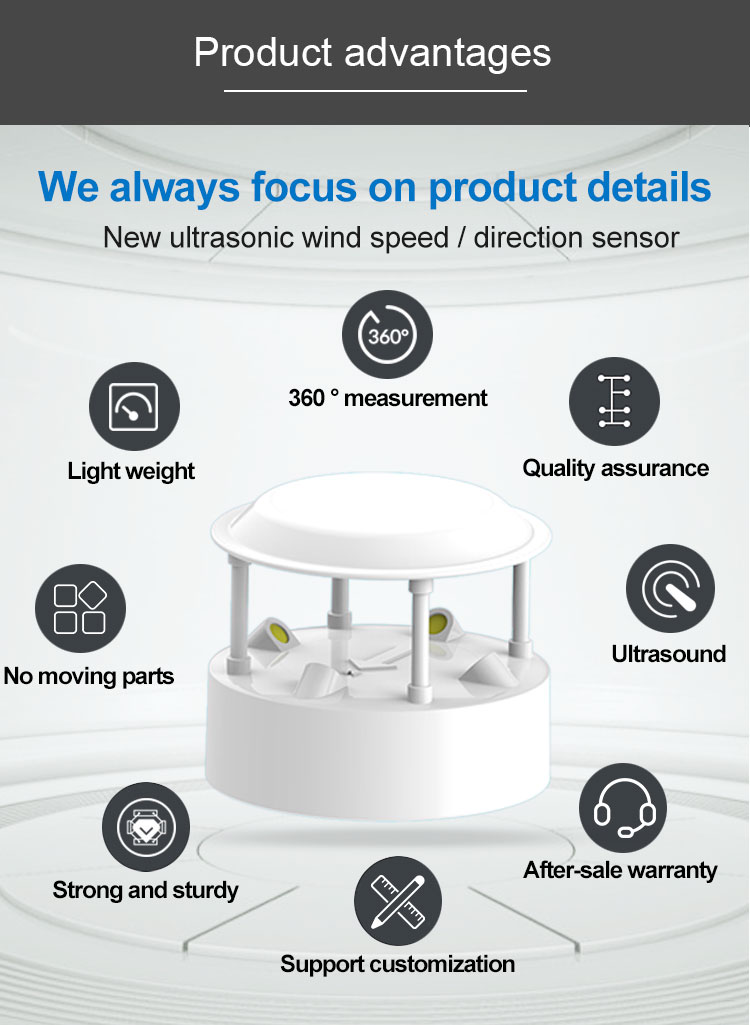what is an anemometer?
Before we share the advantages of ultrasonic anemometer and ultrasonic wind sensor, let’s understand what an anemometer is. An anemometer is a weather instrument that measures wind speed. Wind cup anemometer is the most commonly used anemometer in weather stations. It mainly consists of three parabolic and conical empty cups, each of which is fixed on a bracket at 120°. The concave sides of an empty cup all face the same way. The whole sensing part is mounted on a vertical rotating shaft. Under the action of the wind, the cup rotates around the axis at a speed proportional to the wind speed.
The anemometer is mainly based on the meter adopting the calorimetric principle to measure the wind speed. The basic principle is to put a thin metal wire in the fluid and pass the current to heat the metal wire to make the temperature higher than the temperature of the fluid, so the metal The silk anemometer is called “hotline”. When the fluid flows through the metal wire in the vertical direction, it will take away a part of the heat of the metal wire, and the temperature of the metal wire will drop. According to the theory of forced convection heat exchange, it can be derived that there is a relationship between the heat Q lost by the heating wire and the velocity v of the fluid.
The wind speed sensor is an intelligent instrument with convenient use, good performance and high reliability. It can be widely used to measure wind speed in greenhouses, environmental protection, weather stations, and breeding places. There are many types of wind speed sensors, which can be divided into Pitot tube wind speed sensors, propeller wind speed sensors, Hall effect electromagnetic wind speed sensors, hot wire wind speed sensors, and ultrasonic wind speed sensors. Compared with the traditional wind speed meter, the ultrasonic wind speed sensor has the advantages of good measurement accuracy and multiple functions, and the structure of its probe is relatively simple. In many applications, it replaces the traditional wind speed and direction sensor. People will choose ultrasonic wind speed sensors in some field precision measurement tasks, such as urban environmental monitoring, wind power generation, weather monitoring, bridges and tunnels, marine ships, aviation airports, various fan manufacturing industries, and industries that require exhaust systems.

The principle of ultrasonic wind speed and direction sensor:
The ultrasonic wind speed and direction sensor mainly uses the ultrasonic time difference method to realize the measurement of wind speed and wind direction. The propagation speed of sound in the air will be superimposed with the airflow speed in the wind direction. If the propagation direction of the ultrasonic wave is the same as the wind direction, its speed will increase; otherwise, its speed will slow down.
Therefore, under fixed detection conditions, the speed of ultrasonic propagation in the air can correspond to the wind speed function, and accurate wind speed and wind direction can be obtained by calculation.

Advantages of ultrasonic anemometer:
Compared with the traditional wind speed and direction sensor, the ultrasonic wind sensor does not require maintenance and on-site calibration. There is no angle limit in 360°, no start wind speed limit, and wind speed and wind direction data can be obtained at the same time; no moving parts, less wear, Long service life; Using random error recognition technology, it can ensure low dispersion error of measurement even under strong wind, making the output more stable.
Application of ultrasonic wind sensor:
Ultrasonic wind speed and direction sensors can be used in industrial and mining fields. For example, in mines, mine accidents caused by insufficient ventilation often occur. Therefore, we need to understand more accurate data underground in real-time to avoid unsafe factors in time;
Ultrasonic wind sensor can be used in the development of new energy sources. Some important equipment is very susceptible to changes in wind speed;
The ultrasonic anemometer can be used in tower cranes. When high winds affect the crane’s work, it will give an alarm;
Ultrasonic wind sensor can also be used in meteorological fields.